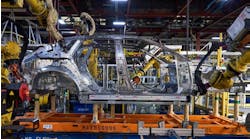With a global recession not quite yet in the rearview mirror, deep political instability and the ongoing European debt crisis, the most successful business leaders today are those who relish uncertainty and shine amid great complexity. Such leaders tend to be in short supply, however.
We all know leaders who are charismatic and intelligent. But these traits carry one only so far. Truly great leaders today must also be "agile learners," capable of building on their past experiences and applying the lessons they've learned to solve new problems faster and better.
This ability, called learning agility, has emerged as the single best predictor of future leadership success. My firm estimates that fewer than 5% of all corporate recruits, employees and leaders are adept agile learners.
Why is learning agility at such a premium? The answer lies in the fast-changing nature of global markets and product lines and the increasing speed of business and commerce. People who fail to learn, adapt and change can become obsolete as fast as eight-track tape players, film cameras and typewriters.
Sir Richard Branson, founder of the Virgin Group, is one of the best examples of an agile leader. Branson went from running a record store in a church crypt to leading one of the world's largest airline and entertainment conglomerates. He's even launched the world's first commercial space travel company.
Branson has been wildly successful, using his uncanny understanding of consumers and willingness to take thoughtful risks. Along the way, he's also made mistakes. Virgin Cola, an attempt to take on Coca-Cola (IW 500/32) and Pepsi (IW 500/20) and Virgin Money, a credit card venture in Australia, both failed due to a lack of understanding of their respective markets. These efforts didn't fail because of a lack of enthusiasm. To promote Virgin Cola, Branson drove an army tank into Times Square and took aim at the Coca Cola billboard.
To this day, though, Branson encourages risk-taking among his executives. On his blog, Branson once said, "Failure usually occurs when leaders avoid the reality of business. You have to trust the people around you to learn from their mistakes. Blame and recriminations are pointless."
But leaders like Branson are more the exception than the rule. Many companies value performance over the capacity to learn and still typically promote "high performers" to leadership positions. Yet, "high-performing" individuals tend to be less adaptable to change and uncomfortable with uncertainty. They are more content with the status quo or simply with incremental improvements.
Agile Learning in Manufacturing
In manufacturing, "high performers" with expertise in areas such as Six Sigma, continuous improvement, and lean manufacturing are obviously critical to the ability to compete globally. In this context, learning agility is not as important, though the competency certainly enables "high performers" to learn from mistakes and improve efficiency.
On a higher level, though, the ability to link customer demand, industrial design, supply chain capabilities and distinctive manufacturing advantages is feasible only when "learning agile" individuals are in key leadership roles. Apple Inc.'s (IW 500/14) ability to launch multiple generations of its iconic devices in rapid succession would be impossible without such capacity.
More than a decade ago, the term "agile manufacturing" was coined to capture this responsive, customer-centric approach to making products. Today's best-in-class manufacturers quickly learn how to marry quality and agility in equal measure to yield world-class results; their operations leaders typically possess an abundance of learning agility.
The good news is that learning agility can be measured and taught. Many IW U.S. 500 companies now use quantitative-based learning agility assessments to screen candidates when hiring and promoting. In fact, "Becoming an Agile Leader," written by my Korn/Ferry colleague Victoria Swisher, is set to hit bookshelves next month as the talent industry's first comprehensive guide on ways to identify and develop learning agility.
According to Swisher, agile learners tend to exhibit five core traits: self-awareness -- the ability to recognize one's own strengths, weaknesses and blind spots; mental agility -- the ability to deal with complexity; change agility -- the willingness to experiment and embrace change; people agility -- the capacity to understand, interact with and influence people; and results agility -- the capability to deliver results.
As we emerge from recession, it's imperative for companies to identify, invest in and recruit the innovators and risk takers who possess such traits and aren't afraid to think out of the box. They're the ones who generate the big ideas and ask the bold questions. Losing these game-changing employees, especially to key competitors, is akin to giving away market share.
Bill Westwood serves as senior partner in Korn/Ferry's industrial practice. Korn/Ferry is a leadership talent development and recruitment firm with about 80 offices in 40 countries. Westwood joined Korn/Ferry in 2000 and has directed a number of large, executive-level assessment engagements for prominent clients. He also led the initial global rollout of the integration of assessment into Korn/Ferry's executive search practice. Westwood previously worked as Motorola's director of global leadership and organization development for the Communications Enterprise.
Westwood can be reached at [email protected].
See also:
Manufacturing Leadership Shortage Signals Need for Recruiting Changes
The Restructuring Challenge: How Manufacturers Can Break 'Tribal' Barriers to Foster Innovation
Democratizing Corporate Innovation: Why Top Down Rarely Works




